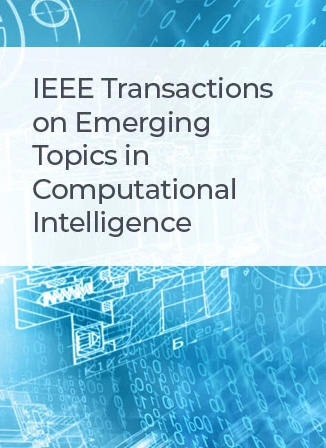Dual-Scale Attributed Graph Transformer for Extracting Spatial-Temporal Features With Applications in Quality Index Prediction
IF 5.3
3区 计算机科学
Q1 COMPUTER SCIENCE, ARTIFICIAL INTELLIGENCE
IEEE Transactions on Emerging Topics in Computational Intelligence
Pub Date : 2024-10-04
DOI:10.1109/TETCI.2024.3462486
引用次数: 0
Abstract
This paper presents a novel deep learning architecture, the Dual-scale Attribute Graph Transformer (DAGT), for extracting spatial-temporal features from attributed graph data. DAGT addresses the challenge of inconsistent sampling periods in industrial data streams by utilizing two key modules: 1) Dual-Scale Spatial-temporal Graph Convolution Network (DSGCN): This module captures both spatial and temporal information within attributed graphs, enabling effective feature extraction for tasks like quality index prediction. 2) Spatial-temporal Graph Attention Block (SGAB): This module employs an attention mechanism to selectively focus on crucial areas of the graph sequence. By assigning higher weights to regions with significant spatial-temporal features, SGAB refines the feature representation. The contributions of DAGT lie in the construction of a dual-scale adjacency matrix for efficient temporal and spatial dimensionality reduction and the design of a graph pooling module via spatial clustering. These innovations enhance the model's ability to learn from attributed graph sequences. The proposed method for quality index prediction is validated using real-world industrial data of the mineral processing process and various comparative experiments.基于双尺度属性图转换器的时空特征提取及其在质量指标预测中的应用
本文提出了一种新的深度学习架构——双尺度属性图转换器(DAGT),用于从属性图数据中提取时空特征。DAGT通过利用两个关键模块解决了工业数据流中采样周期不一致的挑战:1)双尺度时空图卷积网络(DSGCN):该模块捕获属性图中的空间和时间信息,从而能够有效地提取质量指数预测等任务的特征。2)时空图注意块(Spatial-temporal Graph Attention Block, SGAB):该模块采用一种注意机制,选择性地关注图序列的关键区域。通过对具有重要时空特征的区域分配更高的权重,SGAB改进了特征表示。DAGT的贡献在于构建了双尺度邻接矩阵以实现有效的时空降维,并通过空间聚类设计了图池化模块。这些创新增强了模型从属性图序列中学习的能力。利用选矿过程的实际工业数据和各种对比实验对所提出的质量指标预测方法进行了验证。
本文章由计算机程序翻译,如有差异,请以英文原文为准。
求助全文
约1分钟内获得全文
求助全文
来源期刊

IEEE Transactions on Emerging Topics in Computational Intelligence
Mathematics-Control and Optimization
CiteScore
10.30
自引率
7.50%
发文量
147
期刊介绍:
The IEEE Transactions on Emerging Topics in Computational Intelligence (TETCI) publishes original articles on emerging aspects of computational intelligence, including theory, applications, and surveys.
TETCI is an electronics only publication. TETCI publishes six issues per year.
Authors are encouraged to submit manuscripts in any emerging topic in computational intelligence, especially nature-inspired computing topics not covered by other IEEE Computational Intelligence Society journals. A few such illustrative examples are glial cell networks, computational neuroscience, Brain Computer Interface, ambient intelligence, non-fuzzy computing with words, artificial life, cultural learning, artificial endocrine networks, social reasoning, artificial hormone networks, computational intelligence for the IoT and Smart-X technologies.
 求助内容:
求助内容: 应助结果提醒方式:
应助结果提醒方式:


